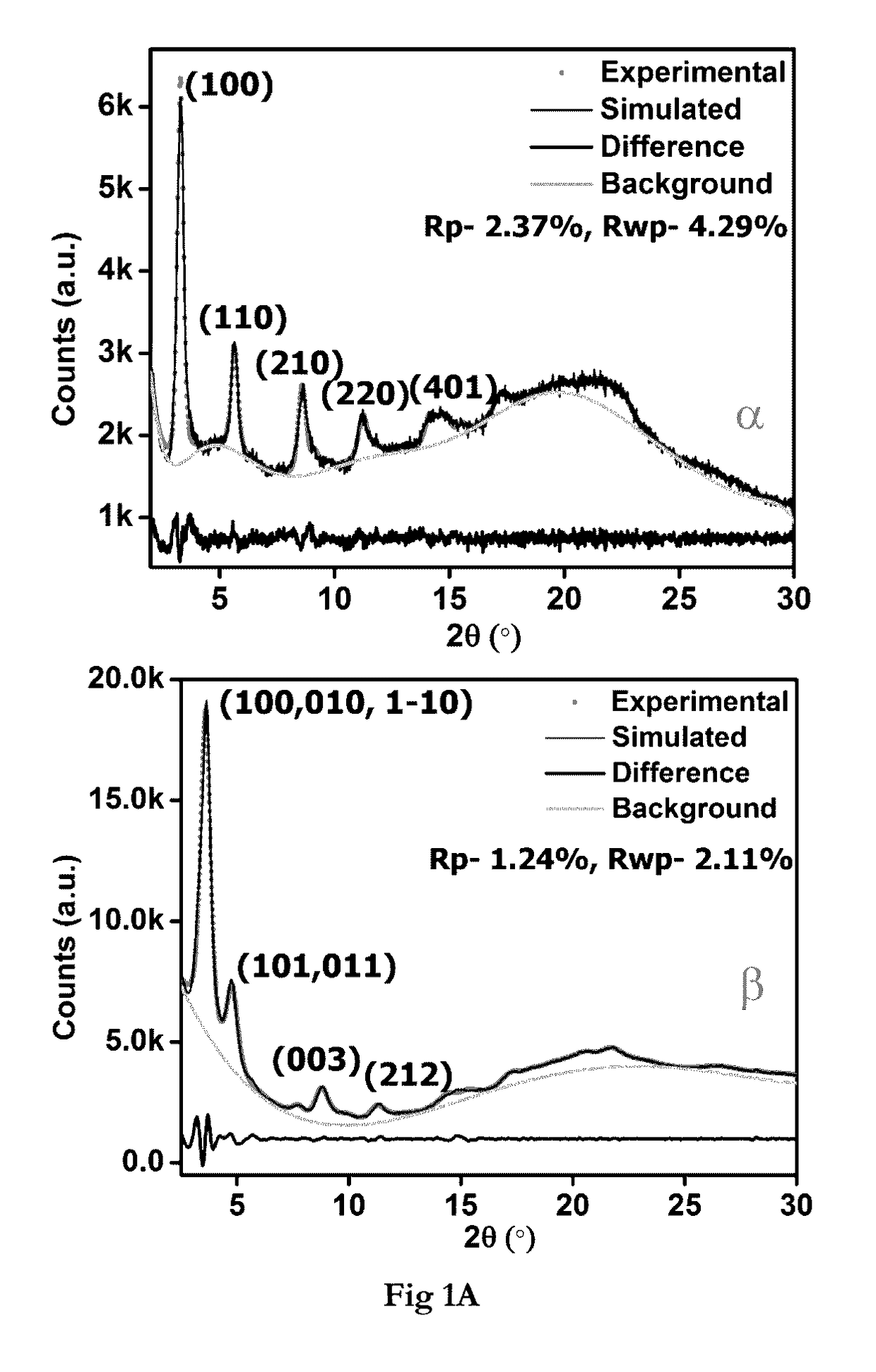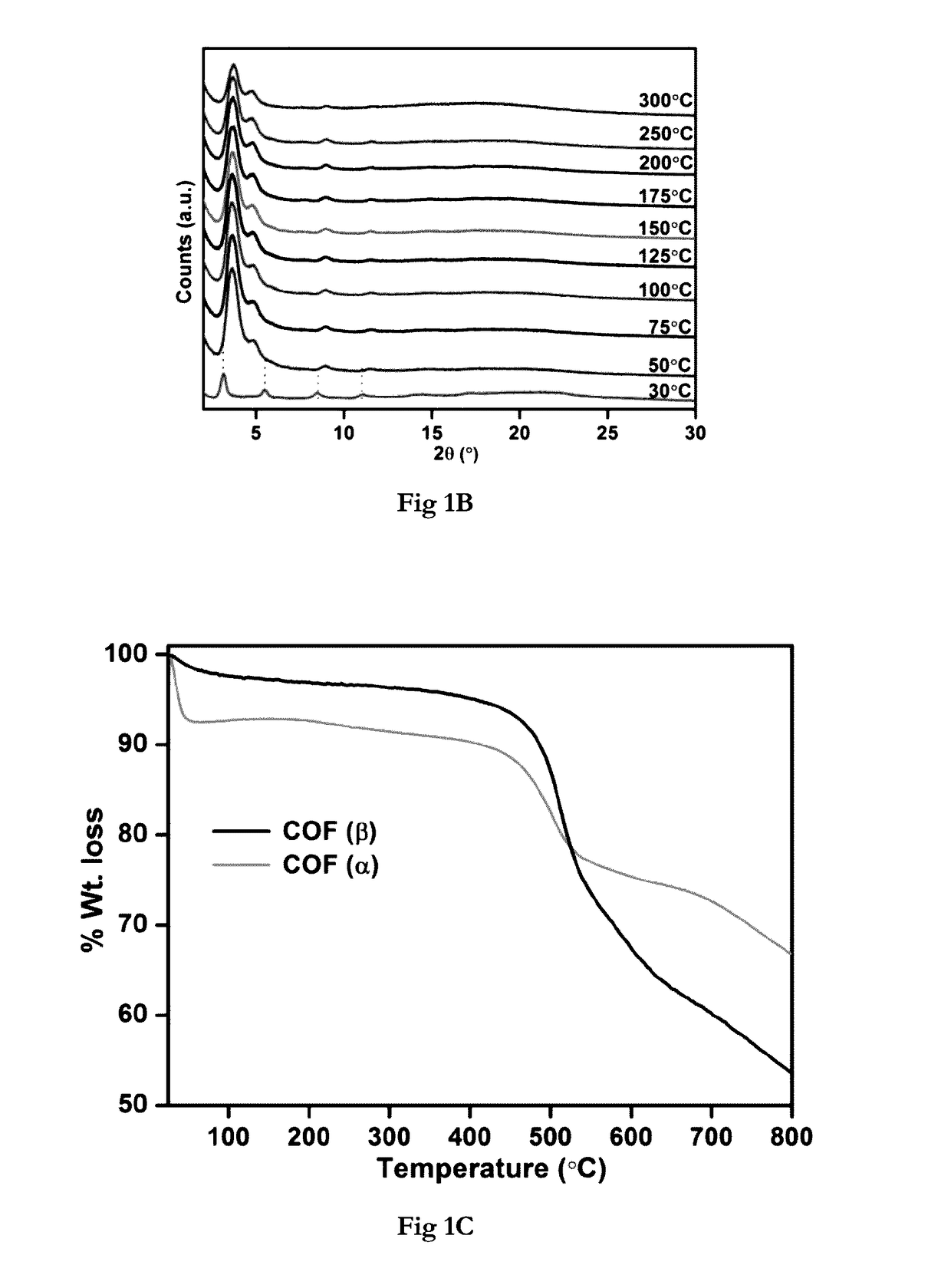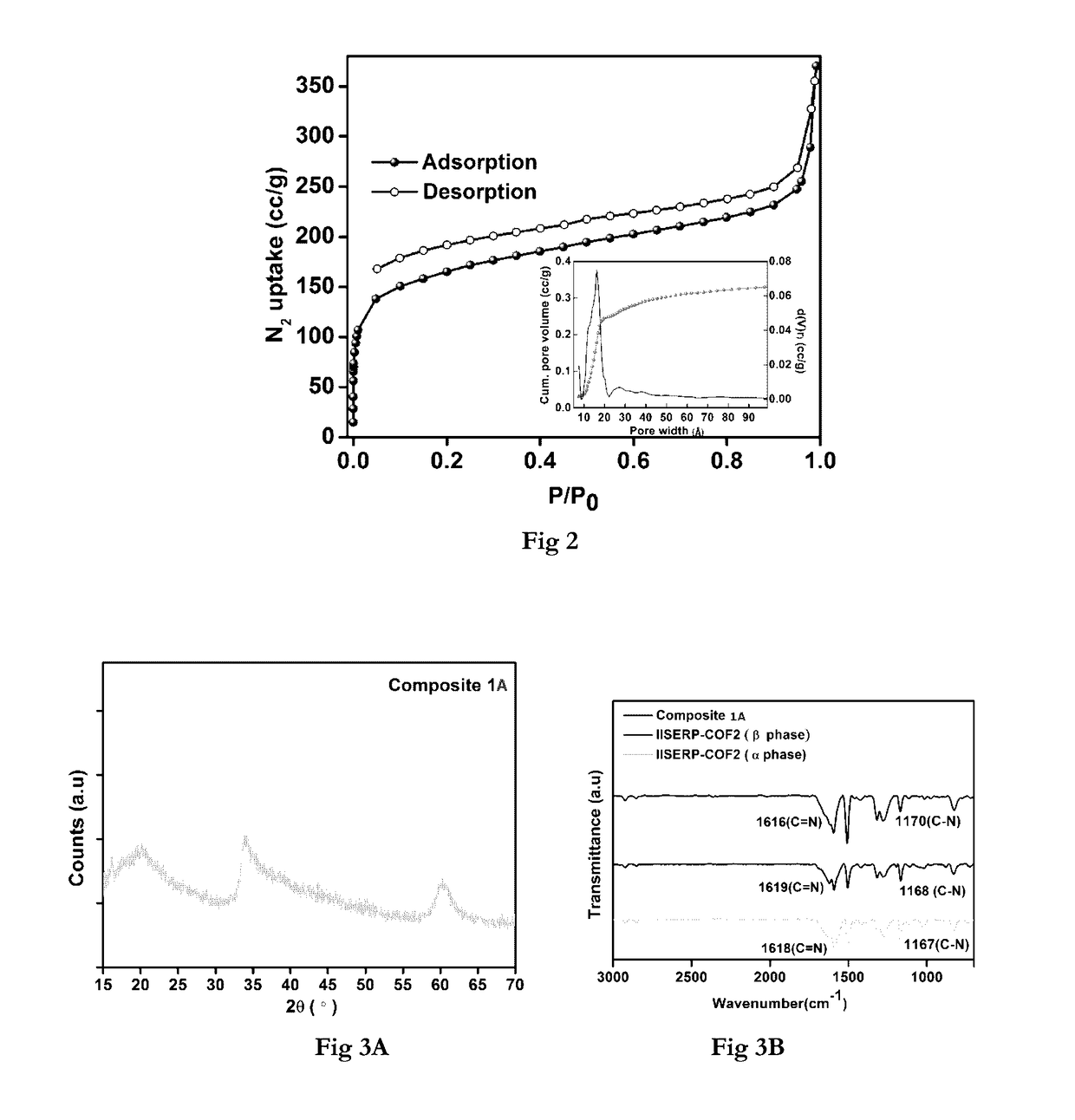Covalent organic frameworks as porous supports for non-noble metal based water splitting electrocatalysts
a covalent organic framework and electrocatalyst technology, applied in the field of porous covalent organic frameworks supporting noble metalfree nanoparticles, can solve the problems of limited application of noble metal catalysts on a large scale, small size distribution, and low cost of noble metal catalysts, and achieves high electrocatalytic activity, improve contact, and improve the effect of conta
- Summary
- Abstract
- Description
- Claims
- Application Information
AI Technical Summary
Benefits of technology
Problems solved by technology
Method used
Image
Examples
example 1
of IISERP-COF2-β
[0148]Tris(4-formylphenyl)amine (40 mg, 0.12 mmol) and 1,4-diaminobenzene (20 mg, 0.19 mmol) were weighed into a Pyrex tube and dissolved in ethanol (3.0 mL). To the mixture O-dichlorobenzene (3.0 mL) was added and stirred until a clear yellow solution was observed. This was followed by addition of 0.25 mL of aqueous acetic acid (3 M solution). The Pyrex tube was flash frozen in a liquid nitrogen bath and sealed. The Pyrex tube along with its contents was placed in an oven at 120° C. for 3 days to obtain about 48 mg of yellow coloured solid which was washed with DMF, dioxane, MeOH, Acetone and THF.
[0149]Isolated yield: 86%; (Formula for COF: C240N32H168, Mol. wt. 3500.2 g / mol, CHN Obsd. C=77.35%; H=4.409%; N=10.85%. Calc. 82.36%; H=4.84%; N=12.81%).
example 2
ization of IISERP-COF2-α and IISERP-COF2-β
[0150]Pawley-Le Bail Method (in P6 / m) reveal unit cell for IISERP-COF2-α: a=b=31.71(3); c=10.25(1); IISERP-COF2-β: a=b=29.43(3); c=28.48(4)Å, The hexagonal layers of the IISERP-COF2-(3, show ABAB . . . arrangement with uniform triangular-shaped 18.5 Å pores along the ab-plane which agree well with the pore size determined from adsorption studies. The layers are held together by a six-point C—H . . . Phenyl type interactions and their buckling results in uniform cavities (22 Å) along the interlayer spaces. PXRD studies showing stability of the IISERP-COF2 are shown in (FIG. 1A). TGA of the IISERP-COF2 in its α and β forms are shown in (FIG. 1C).
[0151]The Field emission SEM patterns of the IISERP-COF2-(3 showed the growth of uniform hexagonal flakes. These hexagonal flakes stack among themselves to form large sheet structures which seem to wrap in-wards around their corners particularly once they reach sizes>500 nm as revealed by HRTEM. A 77K ...
example 4
of Homometallic-IISER-COF2-β Composites
[0156]The COF (100 mg) was dispersed in 20 mL of n-hexane and the mixture was sonicated for about 30 min resulting in a yellow color suspension. To this, a clear methanolic solution of NiCl2.6H2O or CoCl2.6H2O (40 mg in 0.5 mL of MeOH) was added drop by drop over period of 3 h with vigorous stirring until the color of the suspension changed from yellow to deep orange color. The contents were further stirred for 12 h at room temperature and the solid particles were extracted by decanting the solvent and dried at room temperature. They were further heated at 150° C. for 12 h and then cooled to room temperature. The resulting orange solid was then washed with copious amounts of Millipore water (50 mL) and ethanol (25 mL). The deep-orange solid was further suspended in 20 mL of water and reduction was carried out by adding 25 mL freshly prepared 0.6 M aqueous NaBH4 solution under vigorous stirring to obtain COF supported Nickel or Cobalt catalysts ...
PUM
| Property | Measurement | Unit |
|---|---|---|
| weight % | aaaaa | aaaaa |
| wt % | aaaaa | aaaaa |
| temperature | aaaaa | aaaaa |
Abstract
Description
Claims
Application Information
 Login to View More
Login to View More - R&D
- Intellectual Property
- Life Sciences
- Materials
- Tech Scout
- Unparalleled Data Quality
- Higher Quality Content
- 60% Fewer Hallucinations
Browse by: Latest US Patents, China's latest patents, Technical Efficacy Thesaurus, Application Domain, Technology Topic, Popular Technical Reports.
© 2025 PatSnap. All rights reserved.Legal|Privacy policy|Modern Slavery Act Transparency Statement|Sitemap|About US| Contact US: help@patsnap.com



